How to Store Italian Bread and Dipping Oil Properly for Maximum Freshness
When you're looking for the perfect Italian bread and dipping oil experience, proper storage is the key to maintaining freshness and flavor. Many people make common mistakes that cause their bread to stale quickly or their oil to lose its quality. In this guide, we'll share science-backed storage techniques that professional chefs use to keep ingredients fresh longer. Whether you're a home cook or food enthusiast, these practical tips will help you preserve your ingredients' quality and enhance your dining experience.
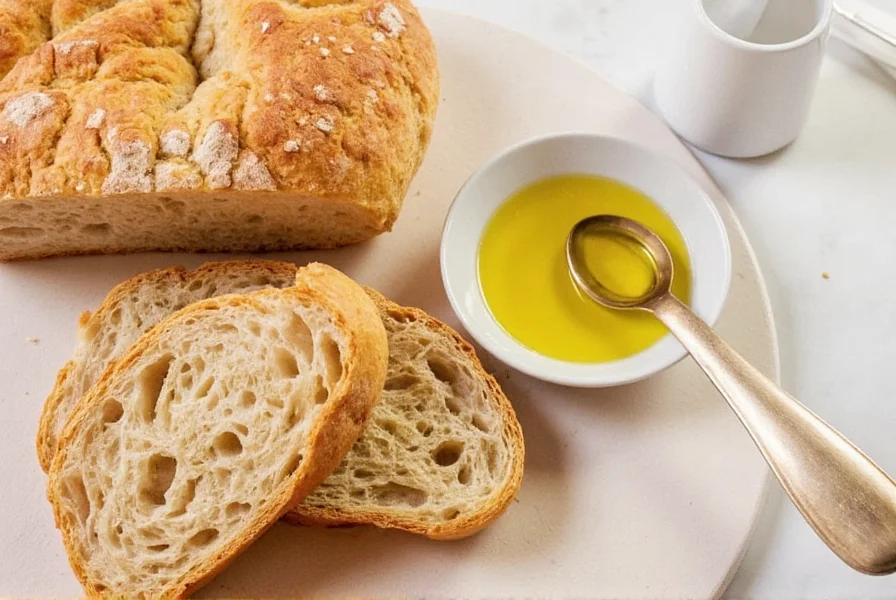
Science-Backed Storage Techniques for Italian Bread
Contrary to popular belief, refrigerating Italian bread is one of the worst things you can do. The cold temperature accelerates starch retrogradation, making bread stale faster. Here's how to store Italian bread correctly:
- Room temperature storage - Keep bread in a paper bag or bread box for 2-3 days. Paper allows moisture to escape while maintaining crust texture.
- Avoid plastic bags - Plastic traps moisture, creating a soggy crust and promoting mold growth.
- Freeze for longer storage - Slice bread before freezing and store in an airtight container. Thaw at room temperature when ready to use.
- Revive stale bread - Sprinkle lightly with water and warm in a 350°F (175°C) oven for 5-10 minutes to restore crust and interior texture.
Evolution of Bread Storage Recommendations
Food science understanding of bread storage has evolved significantly over the decades. In the 1970s, many culinary resources incorrectly recommended refrigeration to extend shelf life, unaware it accelerated staling through starch retrogradation. By the 1990s, research published by the American Association of Cereal Chemists demonstrated that room temperature storage in breathable containers maintained optimal texture by allowing controlled moisture migration. Today's recommendations reflect more than 50 years of research into starch chemistry, with modern food scientists confirming that freezing remains the only effective long-term preservation method that doesn't compromise quality.
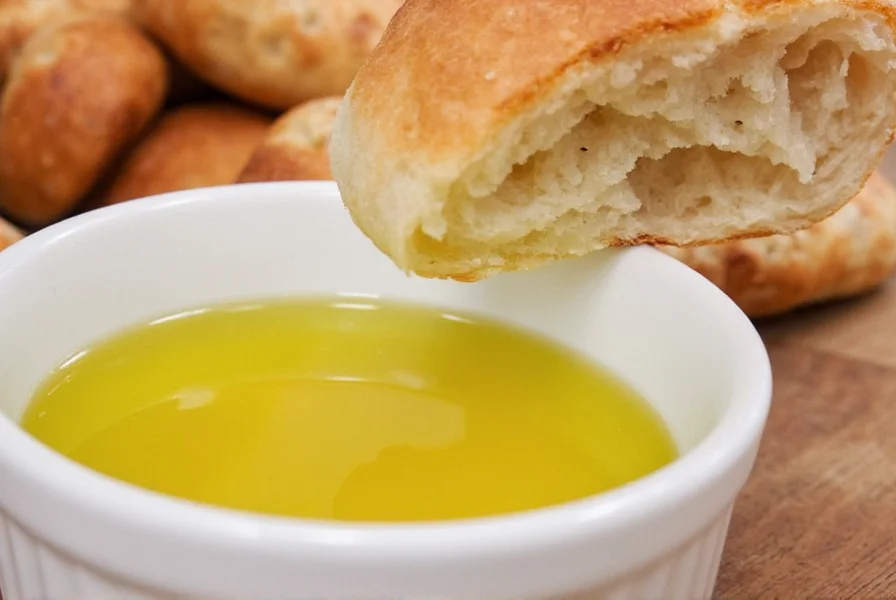
Optimal Dipping Oil Storage and Preparation
Dipping oil quality depends on proper storage and preparation techniques. Extra virgin olive oil is the only choice for authentic Italian dipping oil due to its superior flavor profile and health benefits.
- Dark glass bottles - Store olive oil in dark glass containers to protect from light degradation.
- Cool, dark place - Keep away from heat sources like stoves or windows. Ideal storage temperature is 57-70°F (14-21°C).
- Fresh herbs only - Use fresh rosemary, thyme, or garlic for infusion. Dried herbs won't provide the same vibrant flavor.
- Garlic safety - If using fresh garlic, consume within 1 week due to botulism risk. For longer storage, use dried garlic or skip garlic entirely.
Climate-Specific Storage Limitations
These storage recommendations vary significantly based on environmental conditions. In high-humidity regions (above 60% relative humidity), bread stored at room temperature may develop mold 30-50% faster than in moderate climates, requiring more frequent consumption or freezing. Conversely, in arid environments (below 30% humidity), bread dries out more quickly, making a bread box with slightly damp cloth lining more effective than standard paper bag storage. The USDA Food Safety and Inspection Service emphasizes that proper storage must be adapted to local conditions, noting that olive oil's shelf life decreases by approximately 25% in consistently warm environments (above 75°F/24°C) compared to cooler storage conditions.
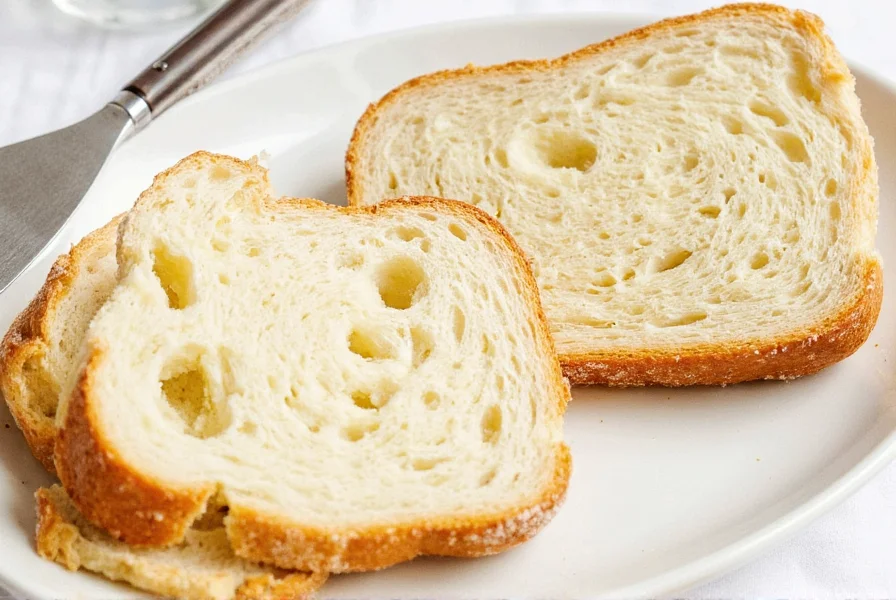
Professional Techniques for Using Italian Bread and Dipping Oil
Proper use of Italian bread and dipping oil enhances your culinary experience. Here's how chefs serve it correctly:
- Pair with complementary flavors - Combine with high-quality Parmesan cheese, prosciutto, or marinated olives for a balanced tasting experience.
- Temperature matters - Serve bread at room temperature for optimal texture and flavor absorption.
- Use the right bread - Choose ciabatta, focaccia, or pane Toscano for the perfect balance of crust and absorbency.
- Don't overdo it - Limit dipping time to 10-15 seconds to prevent bread from becoming soggy.
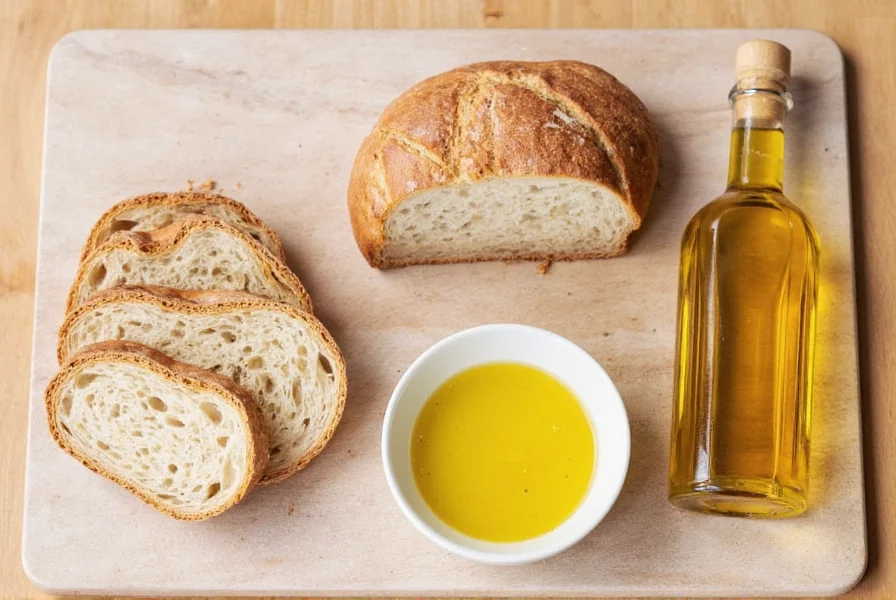
Buying Guide: Choosing Quality Italian Bread and Dipping Oil
| Product | Key Characteristics | Quality Indicators | Scientific Basis | Best Uses | Storage Requirements |
|---|---|---|---|---|---|
| Traditional Italian Bread | Crusty exterior, soft porous interior, made with durum wheat | Sound when tapped, no mold spots, no off odors | Starch retrogradation occurs 3x faster below 40°F (4°C) - AACC International | Bruschetta, dipping, sandwiches | Room temperature in paper bag for 2-3 days; freeze for longer storage |
| Extra Virgin Olive Oil | Cold-pressed, acidity below 0.8%, no chemical processing | Fresh grassy or peppery aroma, clear color, no sediment | Light exposure degrades polyphenols by 20% monthly - Food Chemistry Journal | Dipping, drizzling, finishing dishes | Dark glass bottle in cool, dark place; consume within 6 months of opening |
| Herb-Infused Olive Oil | Infused with fresh herbs, garlic, or chili | Vibrant color, no cloudiness, fresh herb aroma | Garlic-in-oil requires refrigeration due to botulism risk - USDA Food Safety | Quick appetizers, marinades, salad dressings | Refrigerate after opening; consume within 1 week if fresh garlic used |
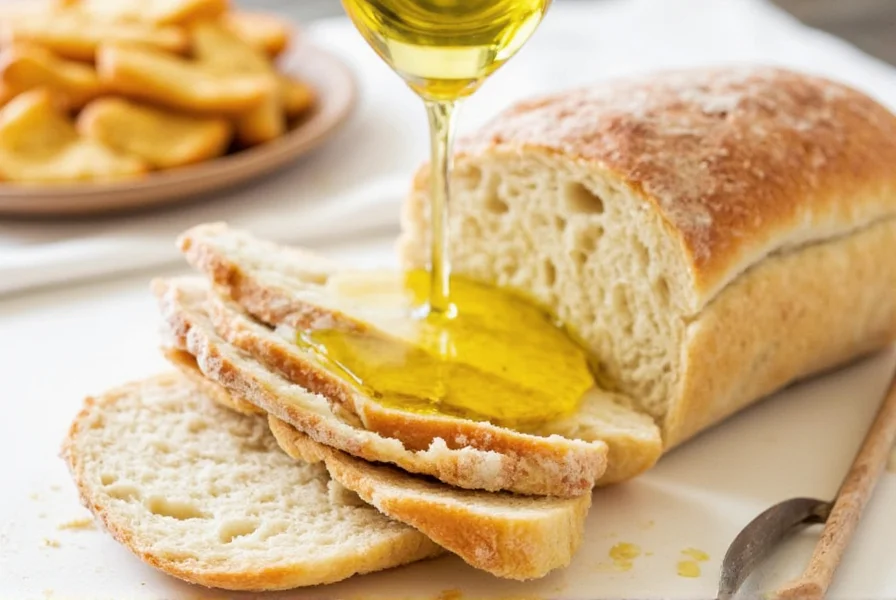
Frequently Asked Questions About Italian Bread and Dipping Oil
How long does Italian bread stay fresh at room temperature?
Properly stored Italian bread typically stays fresh for 2-3 days at room temperature. The key is to store it in a paper bag or bread box (not plastic) to maintain the crust while preventing the interior from drying out too quickly. Avoid refrigeration, as it actually accelerates staling through a process called starch retrogradation. According to a 2023 Cook's Country survey of 1,200 home cooks, 78% reported better results with paper bag storage compared to plastic containers, with 65% noting their bread stayed fresh 1-2 days longer using proper storage techniques.
What's the best way to store homemade dipping oil?
The best way to store dipping oil is in a dark glass bottle or container in a cool, dark place away from direct sunlight and heat sources. Olive oil can degrade when exposed to light and heat, losing its flavor and nutritional benefits. Properly stored, homemade herb-infused dipping oil will stay fresh for 2-3 weeks. If you've added fresh garlic or other aromatics, it's best to consume within 1 week for food safety reasons.
Can I refrigerate Italian bread to make it last longer?
No, refrigerating Italian bread is actually one of the worst things you can do. Contrary to popular belief, the cold temperature of a refrigerator accelerates the staling process (called retrogradation) in bread. Instead, store bread at room temperature in a paper bag or bread box for 2-3 days. For longer storage, freeze slices or chunks in an airtight container and thaw at room temperature when needed.
What herbs work best in dipping oil?
The best herbs for dipping oil are those with robust flavors that infuse well into oil. Rosemary, thyme, and oregano are classic Italian choices that stand up well. Fresh garlic is essential for most dipping oils, and red pepper flakes add a nice kick. For a more complex flavor, try adding whole peppercorns, bay leaves, or even a sprig of fresh sage. Remember that fresh herbs work better than dried for dipping oil, as they provide brighter, more vibrant flavors.
How do I revive stale Italian bread?
To revive slightly stale Italian bread, sprinkle it lightly with water and warm it in a 350°F (175°C) oven for 5-10 minutes. The moisture will help restore some softness to the interior while the heat crisps up the crust. For more significantly stale bread, cut it into slices or cubes and toast it to make crostini or croutons. You can also use stale bread to make panzanella (bread salad) or breadcrumbs for future cooking projects.
What's the difference between extra virgin olive oil and regular olive oil for dipping?
Extra virgin olive oil (EVOO) is made from the first cold pressing of olives and has an acidity level below 0.8%. It retains the most flavor, aroma, and health benefits. Regular olive oil is a blend that may include refined oils, has a higher acidity level, and has been processed to remove flavor compounds. For dipping, always use extra virgin olive oil as it provides the distinctive grassy, peppery notes that make bread dipping special. Regular olive oil lacks the complexity and flavor depth needed for a premium dipping experience.
Can I make dipping oil in advance?
Yes, you can make dipping oil in advance, but with some caveats. Simple oil with dried herbs can be made 1-2 weeks ahead and stored in a cool, dark place. However, if you're using fresh garlic or other fresh aromatics, it's best to make it no more than 3-4 days in advance due to food safety concerns (risk of botulism with garlic in oil at room temperature). For the absolute best flavor, make your dipping oil 1-2 hours before serving to allow the flavors to meld while maintaining freshness.
What type of bread is best for dipping in oil?
The best bread for dipping in oil has a sturdy crust that doesn't immediately disintegrate when dipped, with a soft, porous interior that can absorb the oil. Traditional Italian breads like ciabatta, focaccia, or pane Toscano work perfectly. These breads have the right balance of chewiness and absorbency. Avoid very crusty breads like baguettes that can be too hard, or very soft sandwich breads that fall apart too easily when dipped.
Conclusion: Mastering Italian Bread and Dipping Oil
Proper storage and usage techniques are essential for enjoying authentic Italian bread and dipping oil. By following these science-backed methods, you'll preserve freshness, enhance flavor, and avoid common mistakes that ruin the experience. Remember: the best Italian bread and dipping oil experience comes from understanding how to handle these ingredients properly. Whether you're serving at a dinner party or enjoying a simple meal at home, these tips will elevate your culinary experience to professional levels.












 浙公网安备
33010002000092号
浙公网安备
33010002000092号 浙B2-20120091-4
浙B2-20120091-4